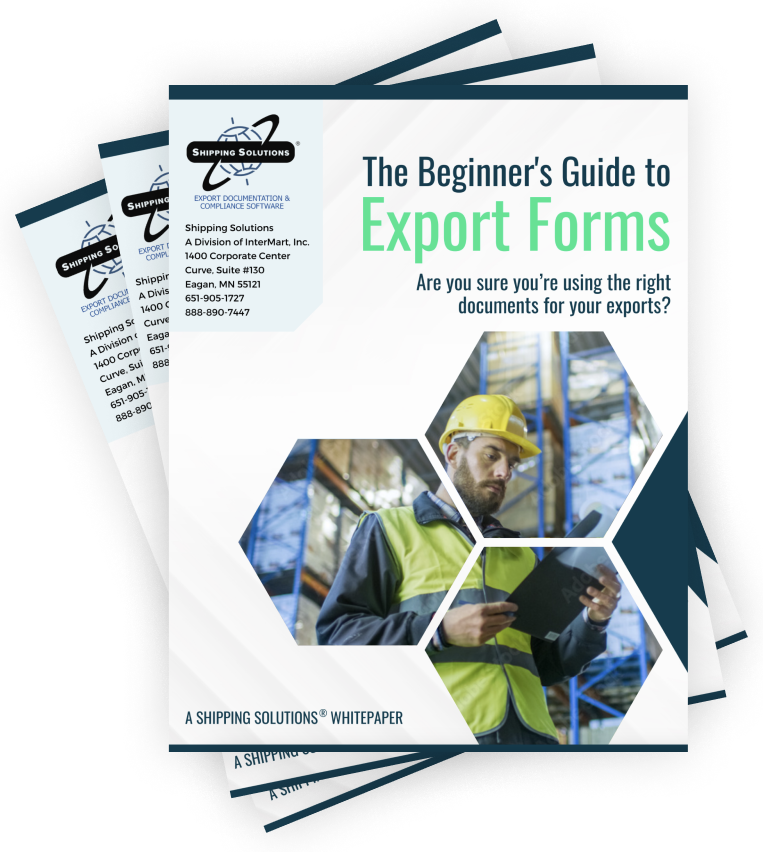The International Trade Blog Export Forms
Stuck in Customs Limbo? How to Prevent Costly Shipping Delays
On: March 10, 2025 | By:  Mitch Kostoulakos |
4 min. read
Mitch Kostoulakos |
4 min. read
 I often hear from frustrated exporters about shipments “stuck” in customs. The shipments may include critical parts needed for an equipment or plant shutdown, expensive high-tech components not generally carried in inventory or medical instruments for hospitals. Delayed orders also mean delayed payments, which gets everyone’s attention. Most exporters rely on their freight forwarders to review the documentation of their shipments. However, details can be easily overlooked, so here are a few best practices for exporters to check before tendering shipments to forwarders.
I often hear from frustrated exporters about shipments “stuck” in customs. The shipments may include critical parts needed for an equipment or plant shutdown, expensive high-tech components not generally carried in inventory or medical instruments for hospitals. Delayed orders also mean delayed payments, which gets everyone’s attention. Most exporters rely on their freight forwarders to review the documentation of their shipments. However, details can be easily overlooked, so here are a few best practices for exporters to check before tendering shipments to forwarders.
Common Reasons Shipments Get Stuck
Customs authorities need to verify the accuracy of shipments to apply the correct duty rates, enforce regulations and prevent fraudulent transactions. The data used in customs entries comes primarily from the commercial invoice for the .webp?width=350&height=453&name=Commercial%20Invoice%20Download%20Now%20(1).webp) transaction. All countries have different, and sometimes obscure, customs regulations. It is true, however, that most delays are caused by a few commercial invoice errors or omissions. Overlook incomplete or inaccurate documentation and your shipment may be delayed, leading to increased costs, supply chain disruptions and customer dissatisfaction.
transaction. All countries have different, and sometimes obscure, customs regulations. It is true, however, that most delays are caused by a few commercial invoice errors or omissions. Overlook incomplete or inaccurate documentation and your shipment may be delayed, leading to increased costs, supply chain disruptions and customer dissatisfaction.
Best Practices for Avoiding Customs Delays
Proper Commodity Descriptions
Commodity descriptions should answer the questions: What is it? What is it made of? What is it used for? Use plain language that can be understood by anyone. Avoid trade names, brand names or part numbers in the description. These can be added below the description or to the packing list if needed. If using a Harmonized System code, consider entering only the first 6 digits, which are universal. All countries apply their own last 4 or 6 digits.
- Learn more in the article, How to Use the Harmonized Tariff Schedule of the United States.
Accurate Value
Customs authorities may question the declared value of a shipment if it appears inconsistent with the type of goods being shipped. The customs agencies in the destination country need to make sure that duty rates are accurate and will hold up the shipment if in doubt. Make sure that your commercial invoice reflects the correct transaction value and that you can clearly justify the valuation method.
In situations where the transaction value is not clear, U.S. Customs and Border Protection (CBP) has established an “appraisement hierarchy” to determine a fair entry value. I explain this in detail in my article, How to Determine Value for U.S. Customs.
Importer of Record (IOR) Contact
Importer of record (IOR) contact information is often lacking on the commercial invoice. Customs in the importing country will not contact the exporter if they have questions or issues. If they are unable to contact the IOR, the shipment will go into storage. Make sure you include recipient name, address, phone number and email address on your commercial invoice, as well as complete customs broker contact information.
Ensuring Smooth Customs Clearance
Problem solving is a big part of the job for logistics managers and it can easily disrupt other functions such as planning, scheduling and research. Customs limbo is especially time-consuming due to differences in time zones and possibly language. Following these best practices will promote efficiency, stop problems before they occur and keep your shipments moving smoothly.
Like what you read? Join thousands of exporters and importers and subscribe to the International Trade Blog to get the latest news and tips delivered to your inbox.

About the Author: Mitch Kostoulakos
Mitch Kostoulakos is an independent logistics consultant and a Licensed Customs Broker (LCB). He was an award-winning International Executive with FedEx Services before launching Ad Hoc Logistics LLC, and previously held management positions in the LTL industry. Ad Hoc Logistics assists small and medium-sized firms with international logistics and customs issues. Mitch holds the CTL—Certified in Transportation and Logistics designation. His articles have been published in Transportation Journal. He was honored to be appointed to the Standing Committee on International Trade and Transportation of the Transportation Research Board beginning April 2020. TRB is a unit of the National Academies of Sciences, Engineering, and Medicine.


